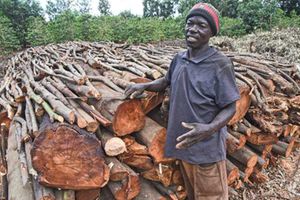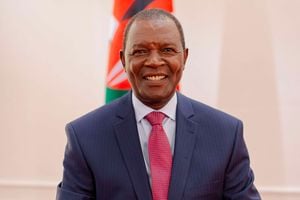Ignore prophets of doom, this rail could take our country further than we can ever imagine
What you need to know:
- Leading to the Naivasha Inland Container Cargo Depot, the line will facilitate the distribution of goods to Rwanda, Uganda and South Sudan.
- Despite its price-tag of Sh150 billion, the railway line is expected to bring in close to Sh8 billion a year.
The inauguration of the second phase of the rail line connecting Nairobi and Naivasha is the latest in a series of large-scale infrastructure development projects. Despite delays, the line was completed in just over two years, exceptionally quick given its scale.
As a freight line not intended for passenger use, its importance lies in the fact that it will encourage trade with our African neighbours.
Leading to the Naivasha Inland Container Cargo Depot, the line will facilitate the distribution of goods to Rwanda, Uganda and South Sudan, further enabling President Uhuru Kenyatta’s commitment to the development of intra-African trade.
DEVELOPMENT
According to the President, it will also be instrumental in, “revolutionising the development of the surrounding areas”, much of which has not been adequately developed.
Significantly, the line is self-funding. Despite its price-tag of Sh150 billion, it is expected to bring in close to Sh8 billion a year, meaning that the initial loan for this segment of the line will repay itself in under 20 years.
The decision of Chinese banks to invest in our country should by no means be taken for granted. With a host of financial investment opportunities available across our continent, these banks have chosen to invest in the development of our country. It is clear that they believe in the current leadership and its commitment to the future of Kenya.
This project is not standalone. Rather, it is a core part of Uhuru’s vision to turn Kenya into the trade hub for East Africa, and one of the biggest in the continent as a whole.
EXPRESSWAY
This vision also encompasses the Jomo Kenyatta International Airport Expressway, which is due to be completed in 2021 and will link the airport with Rironi in Kiambu County. Any country that wants to become a trade hub must ensure the accessibility of the roads surrounding its capital.
This is exactly what this expressway does, allowing drivers to avoid Nairobi’s hectic traffic jams. Given that this is a toll road, it allows users to each partake in the funding of the road, easing our country’s potential debt burden for vast infrastructure projects such as these.
An additional project, which is also connected to the newly opened railway line, is the Naivasha Inland Container Depot, which will become an integral part of a special economic zone incorporating dry ports for Uganda and South Sudan.
The eventual plan is of course to connect the railway to neighbouring countries, something that will be enabled through further partnerships with international actors, who will be inclined to help fund these because they believe in the country’s vision.
The role of external partners in developing our country and continent more generally is indispensable. Recent figures published by the African Development Bank (AfDB) put our continent’s minimum infrastructure needs at over Sh17 trillion per annum, at least half of which remains unfunded.
WORLD BANK
Similarly, statistics by the World Bank indicate that the GDP of African countries could grow by almost 2 per cent a year, if provided with adequate infrastructure. In terms of concrete potential contribution to Kenya alone, such investment could contribute to a rise in our GDP of Sh132 billion per year!
How can one even begin to imagine the good that this would do for our country, allowing us to improve healthcare, education and guarantee food security, to name but a few.
The importance of rail connectivity in a country seeking to develop economically cannot be over-emphasised. The United States could not have become the superpower that it is today without the laying of 1776 miles of track that made up the Transcontinental Railroad in the 19th century.
This allowed not only for the efficient movement of products, but also for new settlements to thrive along the rail network.
Communities that previously has no economic prospects, suddenly found themselves thriving. The government seems to have followed that vision with the Nairobi-Naivasha segment of the rail project.
Although mainly focused on the movement of cargo, this segment of the line, with its 12 stops, will allow for the easy movement of people previously disconnected from efficient public transport.
It will allow local businesses to move their products to market and local children to pursue opportunities in the capital while maintaining access to their homes. What could possibly be more beneficial than this for the development of our great nation?
Michael Mugwang’a is a communications consultant. [email protected]m




